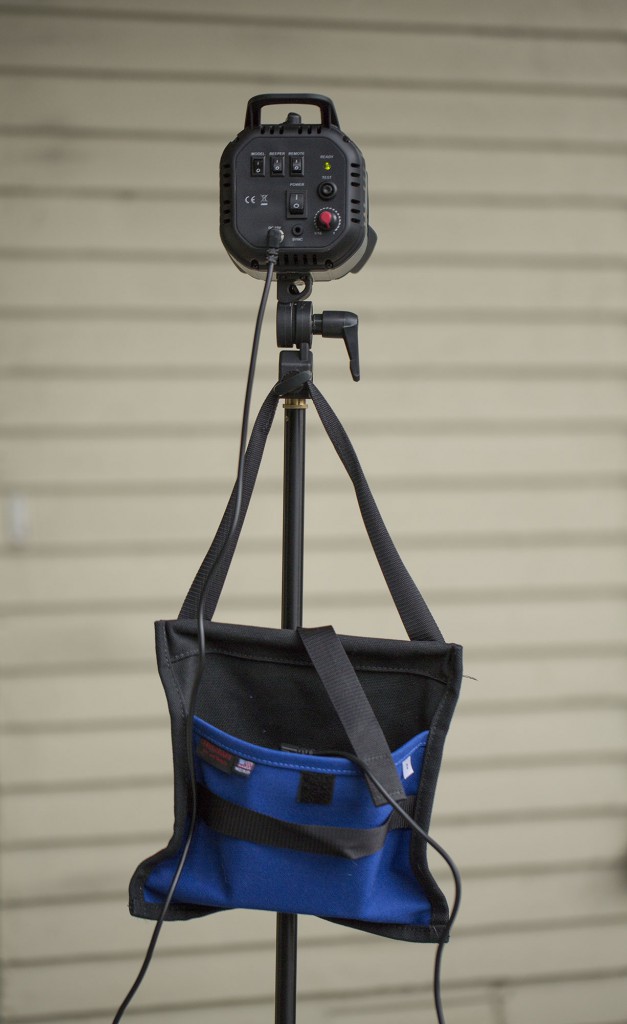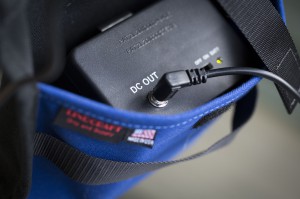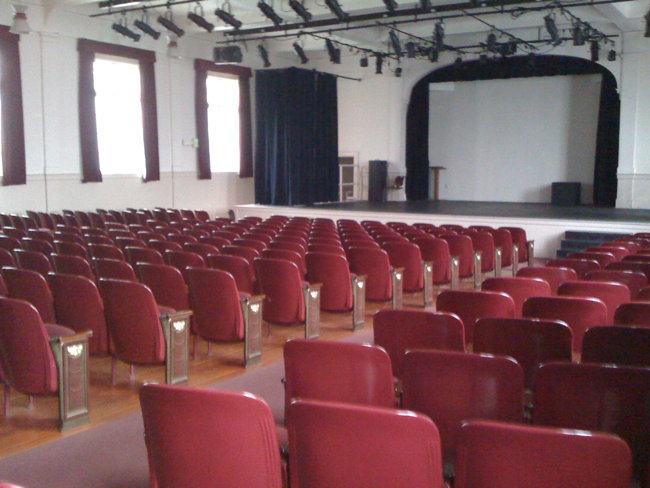Speedlites are great for shooting on the go. And monolights and power packs are great for studio work. But what if you seek the flexibility of a monolight (i.e. you can use it with soft boxes or beauty dishes), with the portability of a battery powered flash, for half the cost of a Speedlite? Would that be too much to ask?
Consider the $250 Flashpoint 180 battery powered monolight. I’ve been using one for the past six weeks, thanks to a loaner from Adorama, and I’d like to share what’s great about this unit, along with a couple things that could stand improvement.
Cords suck. Even if you’re working in a location that has power, it’s often much faster, easier and safer to shoot from battery power. If nothing else, going cordless saves you from running extension cords, which people can trip over. And this unit gives you approximately 700 full-power flashes – more than enough for all but the most demanding assignments. I found that at full power, it took between 4 and 5 seconds to recycle. That’s long enough to seriously take you out of the moment if you’re shooting a portrait, though, so I recommend dialing it back to around 1/2 power, which gives you a much snappier recycle time of about 2 seconds. At 1/3 power, you get a 1-second recycle time.
One of the things that is brilliant about this unit is the choice of commonly available NP-F960 batteries for power. I already own a bunch of these for my Switronix Bolt LED lights, and they are quite affordable if you pick up the knock-off NP-F960s, which work fine for me and can be had for about $25.
It’s important to note that this unit does not come with an AC power option. So if you do run the batteries down, you will need to carry backup batteries.
This monolight is compatible with Bowens-style modifiers such as soft boxes, beauty dishes and such. It also has a friction-based receiver for an umbrella, which I wished could have gripped a little stronger. It was struggling to hold my 60″ umbrella securely, but just managed. It’s really designed for use with small to medium sized umbrellas, one of which is included with the kit. The included shoot-through umbrella is very compact, and features a telescoping core.
Seattle photographer John Cornicello recently pointed out that it’s more than just size – it’s what you put into light modifiers that counts. You CAN use a Speedlite with your 7′ umbrella, but you may not be getting the same light quality as you get with a studio head. This head certainly doesn’t come close to the power of the 2400-watt/second head that John was using in his test, but it IS a monolight. I found I was able to get fantastic results with up to a 60″ reflector.
However, I was a little disappointed when I tried it out with my 47-inch Grand Softbox. Not because the quality of the light suffered, but because the plastic stand clamp on the 180 Monolight isn’t strong enough to support the weight of the Grand. I had to considerably overcrank it to get it to hold the nose up even temporarily. I’m pretty sure it would break if I did that more than a few times. So I wouldn’t recommend this unit for large light modifiers. I wish this light used a stronger metal stand clamp. I’m sure the choice of plastic was dictated by price, but I’d be willing to pay a few more bucks for a clamp that would hold larger modifiers.
Another thing I found myself wishing for was a sync cable longer than the included 10′ one. I don’t know about you, but I need more than 10′ to work with. I have some longer ones, but they use standard phono plugs, and this unit uses a non-standard 1/8″ plug (see photo). So your longer cords won’t work.

Tip: Use a SCRIM BAG to hang the battery pack. This one, which fits the battery pack perfectly, is a
Lindcraft SB2 scrim bag, available from Filmtools.com.

The DC power cable that runs from battery to the light head is also a very short 5 feet, which means you’ll need to devise a way to hang the battery pack from near the top of the light stand. My solution is to use a scrim bag (see sidebar).
The battery pack does have a belt clip, but it’s useless for attaching the battery pack to a light stand, which is where it needs to go. There’s a blue-handled attachment for handheld use of the strobe, but it doesn’t extend at all, limiting its usefulness.
You might think that because it’s battery powered, the modeling light would either be missing or would be a big power drain. The engineers have finessed this by including an small LED modeling light, which isn’t very bright, but gets the job done. It’s an elegant compromise.
On the top of this monolight, like a small rotating periscope, is the optical slave. Its so sensitive that I never needed to mess with it, but if necessary you can rotate the cover to point at your master strobe (or to hide it from some other strobe source that you don’t want as a trigger).
The power knob allows you to steplessly adjust between 1/16th and full power. There is of course no TTL control of this unit, so I did find myself wishing I could dial in even LESS power occasionally. I often want just a tiny bit of fill, something Speedlites are great at providing. I find myself shooting all the time at higher ISOs, to take advantage of natural light. I’d welcome the ability to dial down to 1/64 power.
The bottom line: For traveling light and shooting on location with small to medium Bowens modifiers, this monolight is a winner. It’s price, small size and power-cord-free operation put it within the reach of just about anyone looking to take their still photos up a notch from Speedlites.


